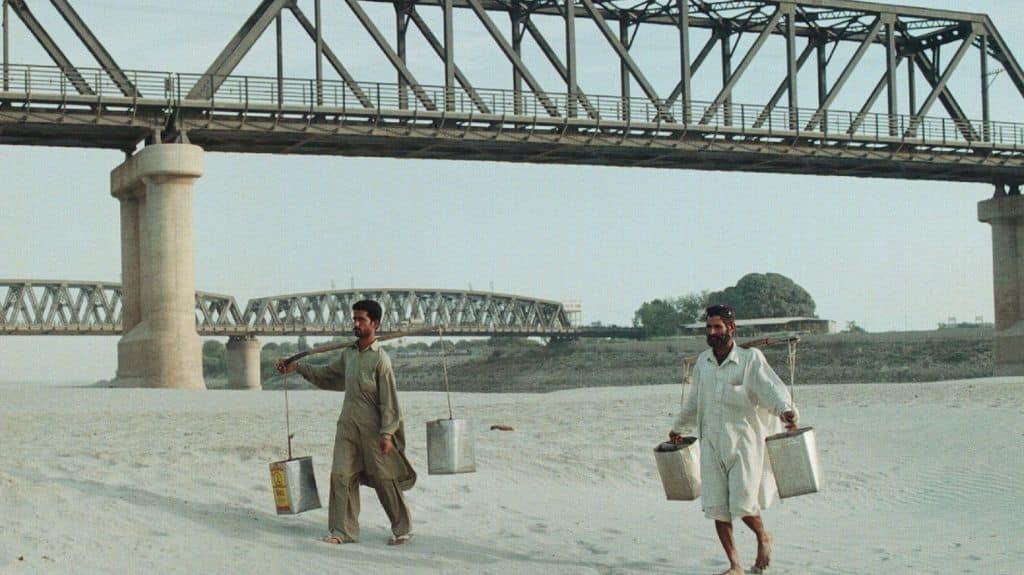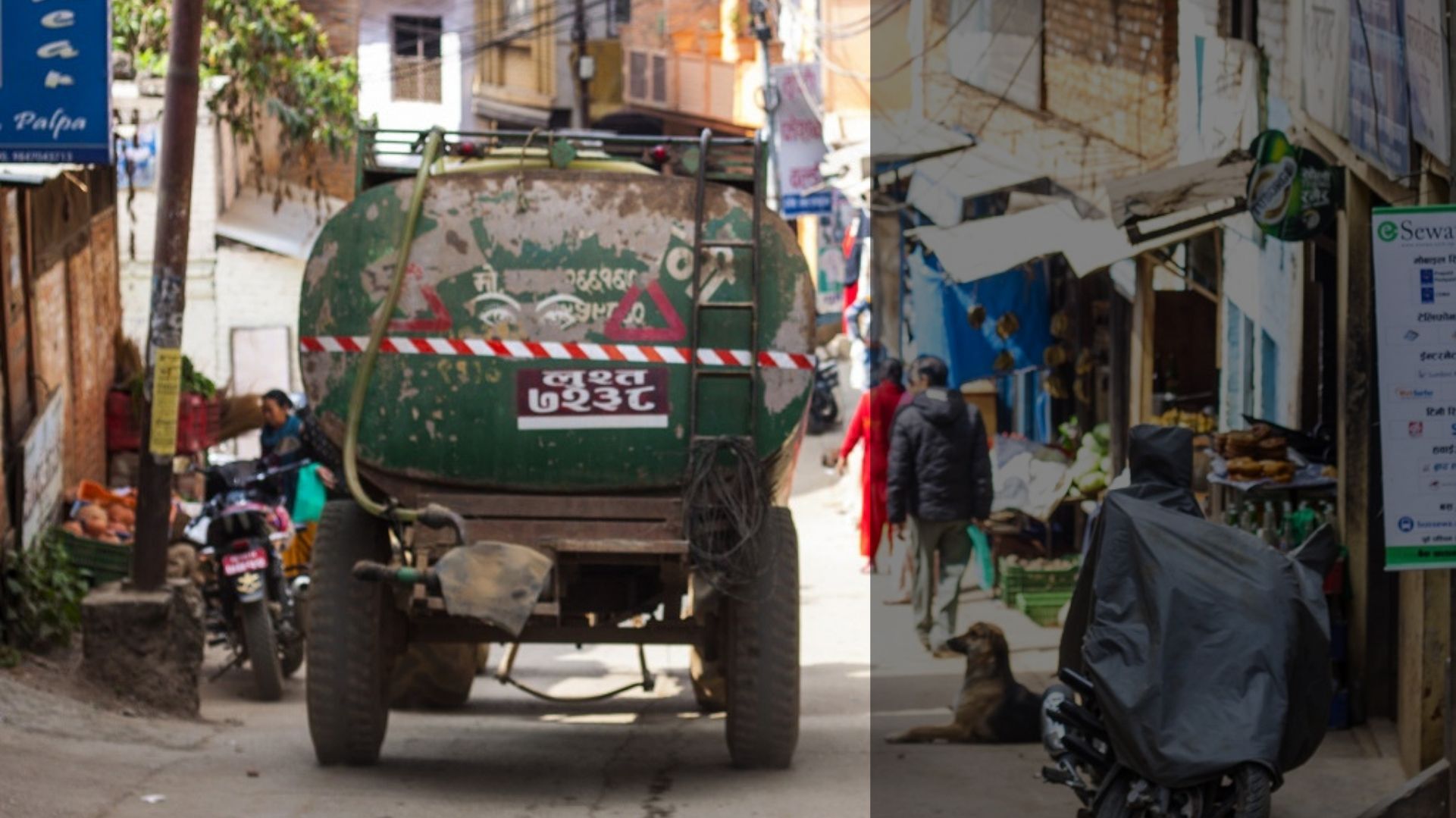As the public sector struggles to provide water in South Asia, a bustling start-up industry is stepping in, but these entrepreneurs need to understand the complexity of what they are addressing. By Laila Kasuri Water management is arriving, if it has not already, at a crossroads where long-established and successful approaches are deemed inadequate in meeting the ambitious Sustainable Development Goal targets. Large-scale, centralised infrastructure, which was the hallmark approach to water management in the last two centuries, has certainly allowed us to make great progress in urban water supply access, but progress on rural water supply lags behind. In South Asia, around 206 million people lacked access to basic drinking water in 2015. Of these, 81 percent lived in rural areas. Addressing this inequitable access to water supply services will be at the heart of water management for the future. Given this context, there have been increasing calls for decentralised solutions to address inequities in access to water. Decentralised water systems complement traditional centralised ones in meeting not just the interim needs of urban slums, but the needs of scattered villages too, where centralised systems are not viable. Part of the reason for this is that cost per capita of constructing traditional water systems is higher in rural areas, given the smaller population scattered over a large area. This leads to high operating costs to be recovered by fewer users. Decentralised systems solve this problem, because they are low-cost yet adaptable. These systems can be expanded into fully centralised ones as communities grow, without locking in too much capital. Moreover, such systems allow for innovation while also providing income opportunities locally. Learning from past mistakes But not all decentralised solutions will do. Past experience shows that decentralised water and sanitation solutions from non-governmental organisations and charities have been unsustainable, with donors building water infrastructure and leaving, without providing beneficiaries the training or market infrastructure for upkeep. This problem is best demonstrated by the handpump crisis in Africa, where tens of thousands of boreholes in rural communities have fallen into disrepair. What the next generation of water management calls for are market-based, decentralised solutions from social enterprises. This requires moving from a ‘charity’ approach of giving free or subsidized water to people, towards enabling them to invest for themselves to ensure sustainability. One criticism of this approach has been that the entry of private actors may make it more expensive for marginalised communities to access a resource that the public sector should provide. The reality is not so black and white.
The 1990s saw massive privatisation of water supply utilities, with different results in different countries.
In Uruguay and South Africa, this wave of privatisation had devastating consequences – extreme price hikes resulting in poor people losing all access to water. In the case of South Asia – and Asia in general – public service provision is extremely poor and the private sector has played an important role to ensure affordable service delivery, for example in Singapore. Usually, to ensure public interest, some form of balance is arrived at such as a public-private-partnership management contract. [rq][caption id=“attachment_6793061” align=“alignnone” width=“1024”]  In the case of Asia in general, public service provision is extremely poor.[/caption][/rq] For decentralised projects, local governments in many South Asian countries still largely do not have the ability to maintain their own budget or deliver services. This means that they are unlikely to invest in solutions, or be motivated to maintain existing solutions. When the local governments fail to provide solutions, many good – but some exploitative – solutions will appear from the private sector. It is not wrong for the private sector to provide public services for which there is demand, nor is it wrong for them to charge for this. However, a better model is one where a balance is struck and the private sector innovates and operates, while the public sector oversees to ensure public interest is maintained. A surge of entrepreneurship This is the perfect time to explore such a balance. We live in times when impact investors and tech philanthropists are keen to invest in entrepreneurial solutions to meet the most pressing issues like water. In South Asia alone, there has been a surge in social enterprises in the past decade, many of which are working on water – a resource that for long was exclusively managed by the government. India, in particular, has been a breeding ground for innovation, with many local businesses demonstrating success across the water supply delivery chain. Online apps such as TrolleyFresh are becoming commonplace in urban centres as they deliver drinking water to customers at their preferred time and place. Water kiosk franchises such as WaterWalla are helping entrepreneurs in Mumbai and Dharavi establish micro-businesses to sell and distribute water by giving them a storefront, marketing assistance and access to technology. Other start-ups like NextDrop are using mobile phones to collect real-time water delivery data to ensure transparency and enhance utility performance. India is not the only country demonstrating innovation in the water sector. In Bangladesh, micro-franchise enterprises like Drinkwell provide local entrepreneurs with low-cost technology that removes arsenic and fluoride from water, so that these entrepreneurs not only have a livelihood for themselves but are able to provide clean water to nearly 200,000 villages in rural Bangladesh. But are these enterprises the exceptions? And can these innovations really solve South Asia’s water woes? While there is hype around these enterprises – especially those using mobile technologies, given South Asia’s Information Technology boom – there is also doubt from the public sector on whether such enterprises can really understand the depth of the problem and deliver on their ambitious goals. Such doubts exist for good reason because managing sectors like water require an understanding of the entire institutional, legal and political systems that surrounds it.
In South Asia, in particular, it is often not the lack of infrastructure or technology that is the largest hurdle in providing access to water – it is the more parochial and political issues.
Take the example of Xyla Water, a start-up born out of an acceleration program in Norway but with most of its operations in Lahore. The startup aimed to provide low-cost, low-energy filters to poor communities in Pakistan, and received significant support and grants to develop its business. Ultimately though, the start-up failed to deliver. One reason was that it put too much focus on product development, but very little on determining the appropriate market, business model or service delivery chain for disseminating the filters. Moreover, the team was not only scattered across the globe but had little knowledge of the water landscape within Pakistan. After all, while filters can purify water and remove pathogens, they still have to be part of a combined solution that looks at the cause of the problem, which could have more to do with sourcing and distribution of water, or sometimes perverse policies. Xyla’s story is not unique. Many start-ups suffer from this dilemma: they tend to be too focused on developing a solution, be it a technology or product, rather than understanding the actual problem itself and determining the appropriate solutions that would address that problem. Then, there is the story of Sukoon Water, a social enterprise founded – and recently ended – by Stanford-graduate Rehan Adamjee, as penned in his start-up postmortem post. After graduation, Rehan had returned to Pakistan filled with the drive to fix a social problem – in his case, to provide access to clean water free from faecal contamination in Shirin Jinnah Colony in Karachi. Though his enterprise showed promise and growth early on, it could not reach a level of sustainability to continue operations. After a few years, his market had plateaued to a few households educated enough to know the value of buying clean water; the remainder continued using contaminated water sources. The enterprise thus failed to grow because it operated on a false assumption of expected behaviour change from consumers. Moreover, as Rehan began to understand the depth and scale of the water challenges in Karachi, he began to feel that his “work began to not only feel small, it began to almost feel irresponsible and irrelevant.” Embracing failure Rehan’s story, however, can be seen as a success, because he realised that for his enterprise to really succeed, not only did the business model need to be sustainable, but that it should address the actual root of the problem. This is the start of building better, sustainable enterprises. Yes, entrepreneurs in Pakistan – and overall South Asia – have a long way to go in addressing water challenges. But like start-ups in any other sector, water start-ups will need to fail first (and perhaps multiple times) before they learn how to build sustainable business models that can work independent of grants and subsidies. They will need to focus on designing solutions to actual problems, not just glamorous solutions that win recognition. Sometimes, that could also mean working without the support of foreign grants, which can be easy to get hold of in low-income countries, but only skew perceptions of long-term financial sustainability.
The responsibility lies on the shoulders of the public sector as well.
For local entrepreneurs to really deliver impactful solutions, governments need to not only engage with big business but support and encourage young entrepreneurs, many of whom are oblivious to issues like water. They also need to equip businesses with the necessary data and knowledge about the sector to develop relevant solutions. In the end, what works in the water sector is a grounded business model that fits within the legal and institutional framework, addresses a problem, has an existing market and can work with the government to provide an integrated solution. Laila Kasuri is a Water Investment and Policy Solutions Analyst with the Global Green Growth Institute based in Seoul. Prior to joining GGGI, she was Faculty Associate at the Lahore University of Management Sciences (LUMS), and consulting the World Bank as part of the South Asia Water Initiative (SAWI). The Third Pole is a multilingual platform dedicated to promoting information and discussion about the Himalayan watershed and the rivers that originate there. This report was originally published on thethirdpole.net and has been reproduced here with permission. *** Banner image: Private water tanker operators supply water to households to fill the gap left by the public distribution system. Photo by Abhaya Raj Joshi


)
)
)
)
)
)
)
)
)



